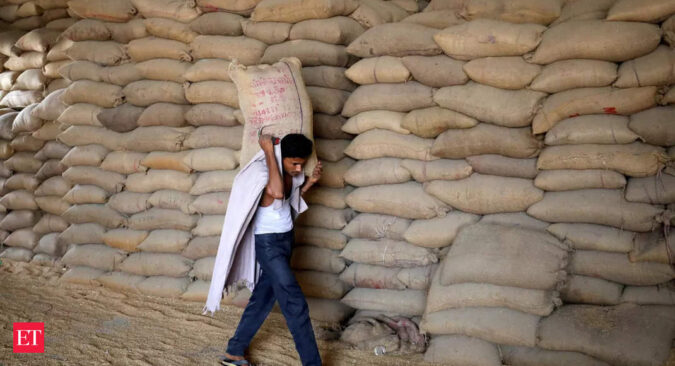“Area sown to wheat is higher than last year. The current condition of wheat crop is very good. Our procurement should be normal at 300-400 lakh tonne in 2023-24,” Meena said durin a press briefing.
Last year, wheat procurement for the central pool had declined to 18.79 MT from 43.3 MT in the 2021-22 marketing year due to early onset of heat which led to a drop in production and increased private purchase of the commodity.
This led to an abnormal increase in the price of the food grain, compelling the government to sell wheat under the open market sales scheme (OMSS). The FCI, which is the nodal agency of the government for procurement and distribution of food grains for welfare schemes, has already undertaken three e-auctions to sell wheat to bulk buyers.
Wheat is being offloaded under the OMSS to cool down the retail prices of wheat and wheat flour (atta). To further soften the retail wheat prices, the government recently reduced the reserve price of FCI wheat offered to bulk users.
The FCI will have at least 9.3-9.5 MT of wheat for its strategic reserve which is 2 MT more than that required for strategic reserve, Meena said. The buffer requirement for April 1, 2023 is 7.4 MT.
The fourth round of e-auction will be held on March 1.The government also reduced the reserve price of fair and average (FAQ) quality wheat to Rs 2,150 per quintal, while for Under Relaxed Specifications (URS) wheat to Rs 2,125 per quintal. These new reserve prices were applicable from the fourth sale of wheat through e-auction.
After India’s wheat production fell to 107.74 million tonnes in the 2021-22 crop year (July-June) from 109.59 million tonnes in the previous year due to heat waves, the government banned wheat exports in May last year.
Wheat production is estimated to rise to 112.18 million tonnes in the current 2022-23 crop year on higher acreage and better yield, according to the second advance estimate released by the ministry of agriculture. However, the rise in temperature during this month in key producing states has again become a concern for the farm scientist and policymakers.
